16 min to read
Are you ready to ensure your website is accessible to everyone? It doesn't matter what type of business you have or how big it is; ADA compliance ensures that anyone with a disability can access and use your online content. This guide will walk you step-by-step through ensuring ADA accessibility on your website so everyone can feel welcome. By following this easy-to-follow workflow, you will be able to learn about tools and tips to optimize your website for ADA accessibility standards so that no one gets left behind!
CodeDesign is the leading digital marketing agency in Lisbon Portugal.
Understand the ADA Standards and What They Mean For Your Website
Any company or group operating in the digital era must have a website. However, it's important to ensure your website is accessible to everyone, including those with disabilities. This is where the ADA standards come into play. The Americans with Disabilities Act (ADA) has guidelines that should be followed to make websites more accessible and inclusive. These standards cover a range of areas such as making websites compatible with screen readers or ensuring all images have alt-text descriptions. By understanding the ADA standards and implementing them on your website, you will comply with the law and make your website more user-friendly for everyone. Read this complete guide on digital marketing funnel and then choose the right digital marketing channel for your business.
Design Your Website for Accessibility
Creating a website that is accessible to everyone should be a top priority for all designers. With the right tools and techniques, it is possible to design for accessibility without sacrificing the aesthetics of your site. By using a clear and simple layout, you can make it easier for users of all abilities to navigate and find the information they need. Additionally, by following universal design principles, you can ensure a site is accessible to a wider range of people, including those with disabilities or limitations. So whether you're designing a site for a business or just for fun, designing an accessible website can make a big difference in your users' lives.
Develop an Accessibility Statement
In today's world, ensuring accessibility for all is not just a thoughtful act, but a legal requirement. With so many people relying on technology to carry out daily tasks, ensuring your website and digital content is easily accessible is more important than ever. In particular, for those with a visual or hearing impairment, it can be challenging to navigate online platforms that are not designed with accessibility in mind. Developing an Accessibility Statement is a crucial step you can take to ensure that all of your website visitors can access your content without difficulty. Also, having this statement can help you demonstrate to others that you are actively taking steps to make your website more inclusive and open to everyone. By ensuring your website meets accessibility standards, you can broaden your audience, including those who may have been excluded in the past. Check these Amazon FBA tips to grow your business and see how optimising your Amazon listing could help you grow.
Test Your Website for ADA Compliance
As a modern business, it's important to ensure that your website is accessible to everyone, including people with disabilities. That's why testing your website for ADA compliance is a smart decision and a legal requirement. ADA stands for the Americans with Disabilities Act, which aims to protect the rights of people with disabilities and ensure equal access to services and resources. If you want to learn more about this, it's worth spending some time researching the ADA requirements for businesses. Once you understand these standards better, you can use automated testing tools to test your website and ensure it complies with the ADA guidelines. By testing your website for ADA compliance, you can ensure that your site is accessible to everyone, regardless of their ability. Don't let your website be a barrier to those who need your products or services. Test for ADA compliance today.
Create Alternatives to Text Content
As digital media agencies continues to dominate the modern world, the need for creative and engaging content has grown exponentially. However, text-based content can often be tedious and uninspiring, leaving audiences feeling uninterested and disengaged. This is why creating alternatives to text content is becoming increasingly crucial. Businesses and individuals can communicate their message more captivatingly by offering visually dynamic content such as graphics, videos, and animations. In addition, interactive elements like quizzes and surveys can help to build a sense of connection between the content creator and their audience. So whether you're a marketer looking to increase engagement with your brand or a content creator looking to stand out in a crowded digital space, experimenting with alternatives to text content is definitely worth exploring.
Update Your Website Regularly to Maintain Compliance With ADA Standards

Ensuring your website complies with the Americans with Disabilities Act (ADA) standards is critical in today's digital world. It not only makes your site more accessible to disabled individuals, but it also protects you from potential legal issues. One key aspect of compliance is updating your website regularly. By doing so, you can ensure that any new content added to the site complies with ADA standards. This includes accessible images, videos with captions, and text easily readable by assistive technology. Also, test your website periodically for ADA compliance, as standards are constantly being updated and improved upon. Don't let your website fall behind the curve - keeping it up-to-date will not only benefit those with disabilities but also enhance the overall user experience for all visitors.
There you have it, an easy-to-follow guide for optimizing your website for ADA compliance. Taking these steps will help make sure that all the hard work and effort you put into designing and creating your website can be accessed by all of your users no matter what their disability and with minimal effort. Remember to update your website regularly to maintain full compliance with the standards set by the ADA. Compliance is a must, so if you adhere to everything we discussed in this article, your visitors won't have any trouble accessing and enjoying your site's content.
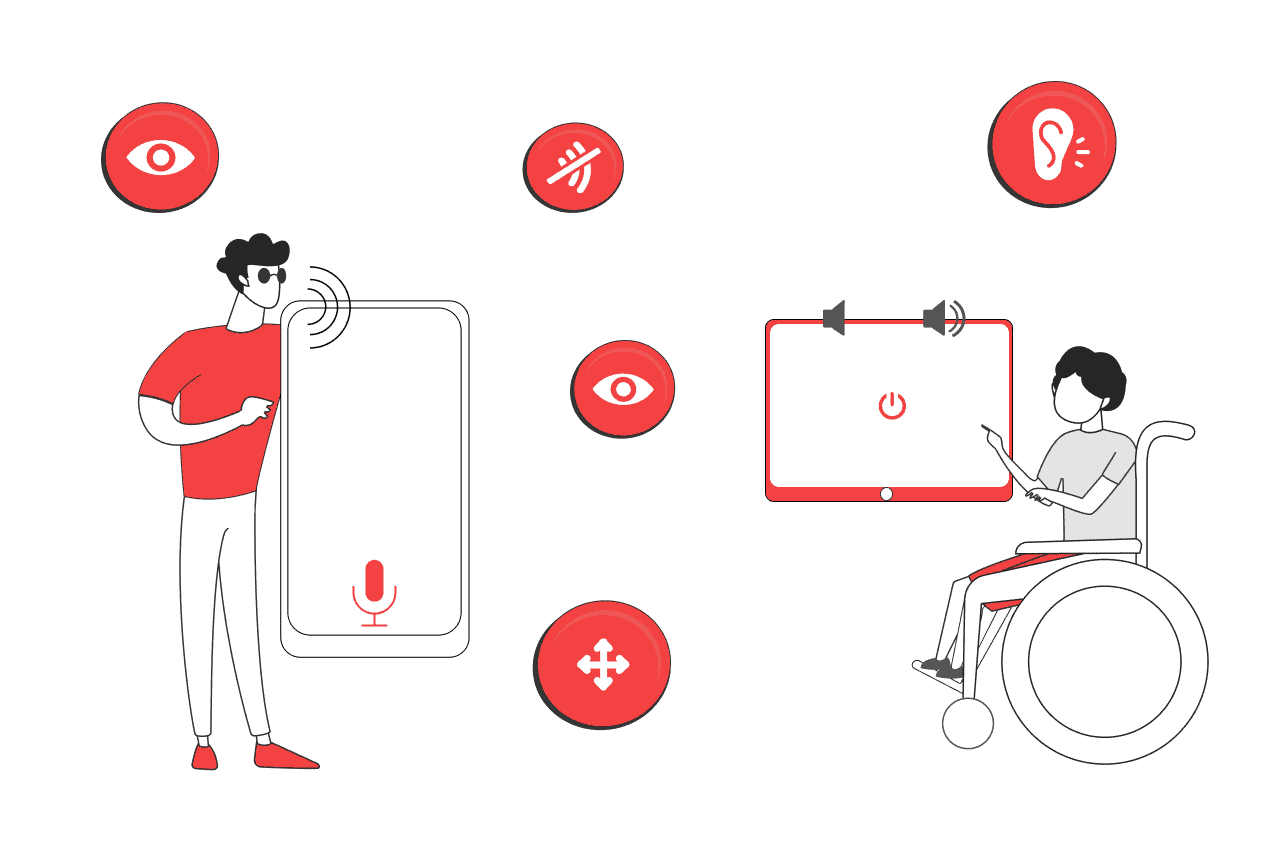
Imagine a world that's inclusive and accessible for everyone. Yes, I'm talking about the digital realm. What's more interesting? Artificial Intelligence is pioneering the charge. It's making websites ADA compliant. ADA, you ask? It stands for the Americans with Disabilities Act. It ensures that businesses cater to differently-abled individuals, be it in the physical world or the world of bytes and pixels. The question now is, how does AI do this? Here's how.
B2B websites are a prime example. AI's contribution here is awe-inspiring. Take document accessibility. It's a big deal. Lots of info needs to be processed. Text, images, tables, charts. Oh, and let's not forget videos. Thanks to AI, those can be analyzed and made accessible. AI-powered tools scan and read documents, identifying any non-compliant elements. But it doesn't stop there.
They also provide actionable solutions, including alternative text for images, subtitles for videos, and a coherent reading order for content. Not to mention, they ensure keyboard accessibility. Now, imagine an entrepreneur with a vision impairment navigating such an AI-optimized site. It's smooth sailing, isn't it? Their experience? Improved. Their engagement? Amplified. And as a brand, you've embraced inclusivity.
Now let's swing to the eCommerce world. Here, AI has another magic trick - personalization. Let's paint a picture: a customer with a hearing impairment is shopping online. But, oh no! The website has video ads without subtitles. Enter AI. It swoops in and tailors the browsing experience. It adds real-time captions, enhances color contrast, and even adjusts font size for better readability. All this happens seamlessly, enhancing the shopping experience. Read this guide on E-commerce supply chain and voice search optimization.
You see, potential customers don't simply purchase products or services. They buy experiences. Make it accessible and they'll remember your brand. They'll become loyal customers, recommending your products to friends and family. And that, my friend, translates into potential sales.
Both for B2B and eCommerce websites, AI-powered ADA compliance is no longer just a regulatory requirement. It's a strong brand statement. It shows that your brand cares about each and every customer. It's about inclusivity, it's about doing good. And while doing so, it helps drive revenue. It's a win-win situation, right?
So, let's step into the world where AI makes digital platforms more inclusive and accessible. After all, every customer deserves to enjoy a seamless, user-friendly online experience.
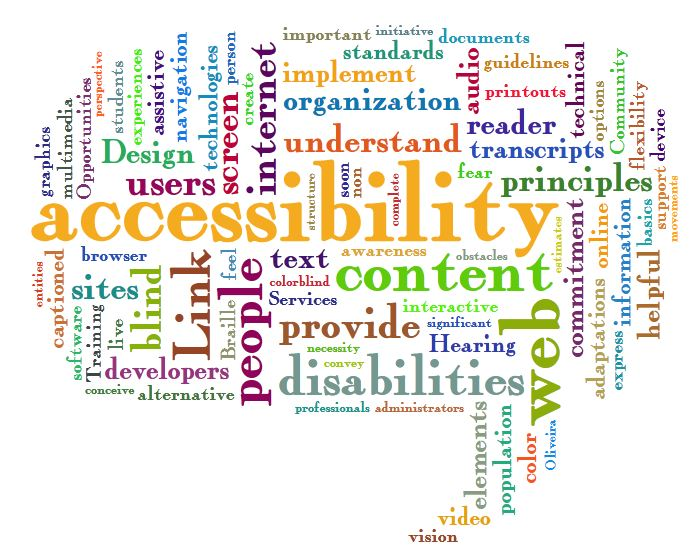
How can I use AI to optimize for ADA Compliance?
One impressive example in the B2B landscape is the platform "AccessiBe." They're doing some seriously cool stuff with AI to make websites ADA-compliant. This tool scans and analyzes a website's components: images, forms, buttons, pop-ups, you name it. Then it provides solutions like screen-reader optimization, keyboard navigation, and customizable profiles for different disabilities. This makes for a game-changing user experience.
Then, for instance, let's take a look at "UserWay." It's another AI-powered platform helping businesses embrace digital accessibility. A simple widget makes websites more navigable for those with visual or motor impairments. Its features include large text, high contrast, and legible fonts. It's quick and it's effective, creating a dynamic user experience.
And let's not leave out eCommerce! "Allyable" is a fabulous example. Their platform is AI-powered and optimizes websites for accessibility. Whether it's adding closed captions to videos or making color adjustments for those with color vision deficiency, Allyable's got it covered. It can even learn user preferences and tailor the experience, making shopping more personalized and fun.
Lastly, there's "AudioEye." They're well-known for ensuring digital accessibility in the eCommerce landscape. Their AI technology helps identify and resolve accessibility barriers in real-time. They also offer a toolbar that allows users to customize the website according to their preferences. This creates an inclusive shopping experience, which can turn one-time customers into repeat buyers.
Each platform demonstrates how AI can make the digital world more inclusive, creating an accessible experience for every user. By doing so, they meet ADA compliance, strengthen brand reputations, and boost potential sales.
Stepping into the broader digital landscape, AI is making strides in improving accessibility through voice recognition technology. For instance, "Google's Voice Access" is an app that helps people with motor impairments navigate their devices and access various apps using only their voice. The AI technology of this app understands and implements complex voice commands, effectively making Android devices more accessible.
Moving along to social media, Twitter's recent implementation of automated captions for voice tweets is a sterling example of AI's role in digital accessibility. This feature allows people with hearing impairments to engage with voice content, creating a more inclusive digital environment.
Then there's "Microsoft's Seeing AI," an app designed to assist people with visual impairments. It uses AI technology to narrate the world around them. Reading text in documents to recognizing friends and describing physical objects enhances the user's understanding of their surroundings.
Taking a leap into virtual reality, Facebook's "Oculus Rift" uses AI to enhance accessibility in VR. It has an integrated system called "Oculus Voice" which allows users to navigate the interface using voice commands. This makes engaging with the VR world easier for people with motor impairments.
Moreover, Adobe's "Acrobat Reader DC" uses AI to make PDF documents accessible. It has a 'Read Out Loud' feature uses text-to-speech technology, allowing visually impaired users to listen to the document content. The AI technology is also used to identify and tag various elements like headings, lists, and tables, making it easier for screen readers to interpret the document structure.
And let's not forget Amazon's "Alexa," a voice-controlled AI assistant designed to provide an easier and more accessible user experience. From setting reminders to controlling smart home devices, Alexa can perform a wide range of tasks, providing valuable assistance to people with various disabilities.
In conclusion, these advancements underline how AI technologies are not just enhancing ADA compliance, but are actively breaking down barriers, fostering inclusivity, and delivering an enriching user experience to people of all abilities. Companies embracing this technology are setting a new standard for digital accessibility, which ultimately reinforces their brand's image, reputation, and potential sales.
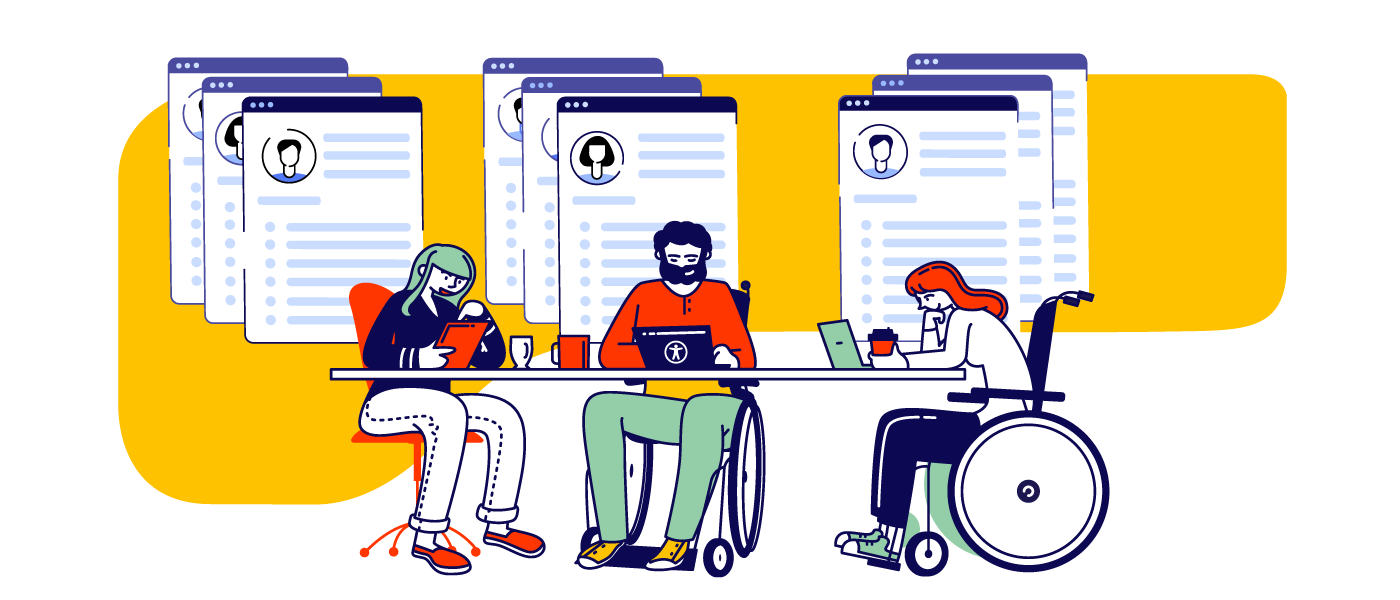
What is the true dimension of this problem?
Finding concrete numbers on how many websites are ADA compliant can be challenging, given the dynamic nature of the web. However, we can certainly glean some insight from recent studies.
A WebAIM survey titled "Web Accessibility Evaluation of the Top 1,000,000 Home Pages" conducted in 2020 provides some interesting statistics. Their automated analysis found that a staggering 97.4% of home pages had detectable WCAG 2 failures. WCAG 2 (Web Content Accessibility Guidelines) is a set of guidelines that provide a framework for making digital content more accessible. The most common issues were low contrast text, missing alternative text for images, and empty links.
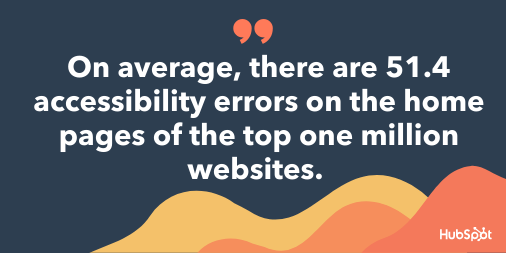
Moreover, according to the Bureau of Internet Accessibility, it is estimated that only 10% of websites are fully ADA-compliant. This indicates a considerable gap that needs to be addressed.
Given the importance of ADA compliance for ensuring inclusive and accessible digital experiences, these statistics emphasize the pressing need for businesses to prioritize accessibility in their web design and maintenance practices. With the help of AI and the platforms we mentioned earlier, we hope to see these numbers improving.
Please note that while these numbers provide an overview of the situation, they do not account for the continual efforts made by businesses worldwide to enhance their digital accessibility and ADA compliance.
Finally, businesses should view these statistics as an opportunity to distinguish themselves. By committing to ADA compliance, they can serve a wider customer base, improve their brand reputation, and avoid potential legal issues related to non-compliance.
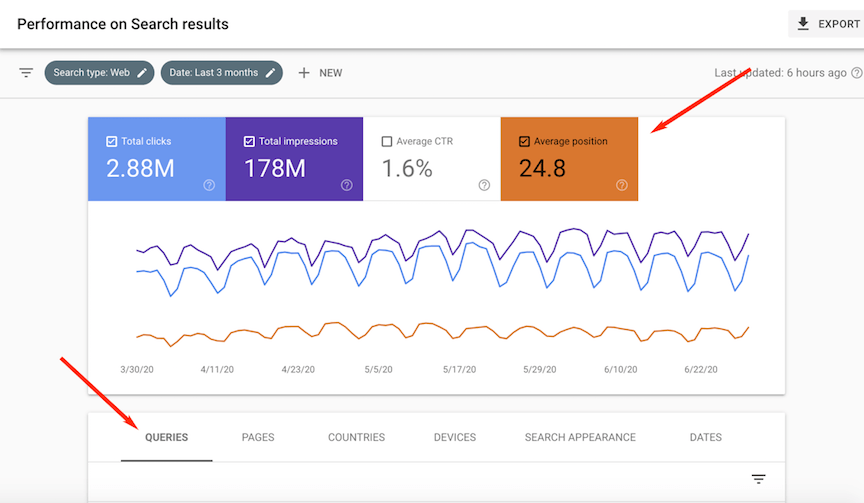
Back to performance, does ADA affect SEO performance?
ADA compliance can have a meaningful impact on your SEO. Let's break it down!
1. Enhanced User Experience: ADA compliance means your website is user-friendly for all. Users can easily navigate and interact with your site, increasing user engagement, decreasing bounce rates, and improving time on site - all positive signals for SEO.
2. Better Content Structure: ADA compliance calls for clear headings, alt-text for images, and accessible forms. These make your site easier to understand for both users and search engine crawlers, aiding in better indexation and ranking.
3. Increased Site Speed: Optimized media for ADA compliance, like compressed images and transcripts, can speed up your site. Fast loading times contribute to better user experience and are a ranking factor for search engines.
4. Boost in Traffic: A more accessible website caters to a larger audience, increasing your potential website traffic. More traffic can lead to higher visibility and better search engine rankings.
5. Improved Semantic HTML: Semantic HTML is used to improve website accessibility, allowing screen readers to interpret content better. It also gives search engines a better understanding of the content structure, potentially improving rankings.
6. Video Transcripts: Videos with captions and transcripts not only aid the hearing impaired but also provide additional indexable content. This can boost your video SEO, leading to more visibility and traffic.
7. Reduced Legal Risk: ADA lawsuits can damage your brand's reputation. A high-profile lawsuit can lead to negative press, which might affect your search engine rankings.
In sum, making your website ADA compliant can have a series of SEO benefits, from better content structure to enhanced user experience. Prioritizing accessibility is not only a move towards inclusivity but also a smart SEO strategy that can boost your visibility and organic reach in search engine results.
But there's more,
8 Mobile Optimization: ADA compliance encourages responsive design, making your website accessible on any device. Since Google primarily uses the mobile version of a website for indexing and ranking, having a mobile-friendly site is crucial for SEO.
9 Positive Online Reputation: Companies that prioritize ADA compliance demonstrate their commitment to inclusivity, leading to a positive online reputation. High online reputation can positively influence SEO, as search engines want to show the best and most trusted sites to their users.
10 Long-Tail Keywords: When creating alt text for images and transcripts for videos, you often naturally include long-tail keywords. These are longer, more specific phrases that visitors are likely to use when they're closer to a point of purchase or when they're using voice search. Having these in your content can boost your SEO.
11. Backlinks: If your website is ADA compliant and provides valuable, accessible content, other websites are more likely to link back to yours. These backlinks are a significant ranking factor for search engines.
12. Decreased Bounce Rate: A fully accessible and easy-to-navigate website reduces the chances of users leaving, or "bouncing off" your site after viewing only one page. A low bounce rate signals to search engines that your website is providing valuable content, which can improve your ranking.
In the grand scheme of things, ADA compliance might seem like a small piece of the puzzle. However, as we've outlined, the impact on your website's SEO can be substantial. Prioritizing accessibility not only brings about a wider audience but also higher visibility on search engine results. It's a powerful combination that reinforces the importance of creating an inclusive digital environment. With every step taken towards ADA compliance, businesses are stepping towards better SEO performance.
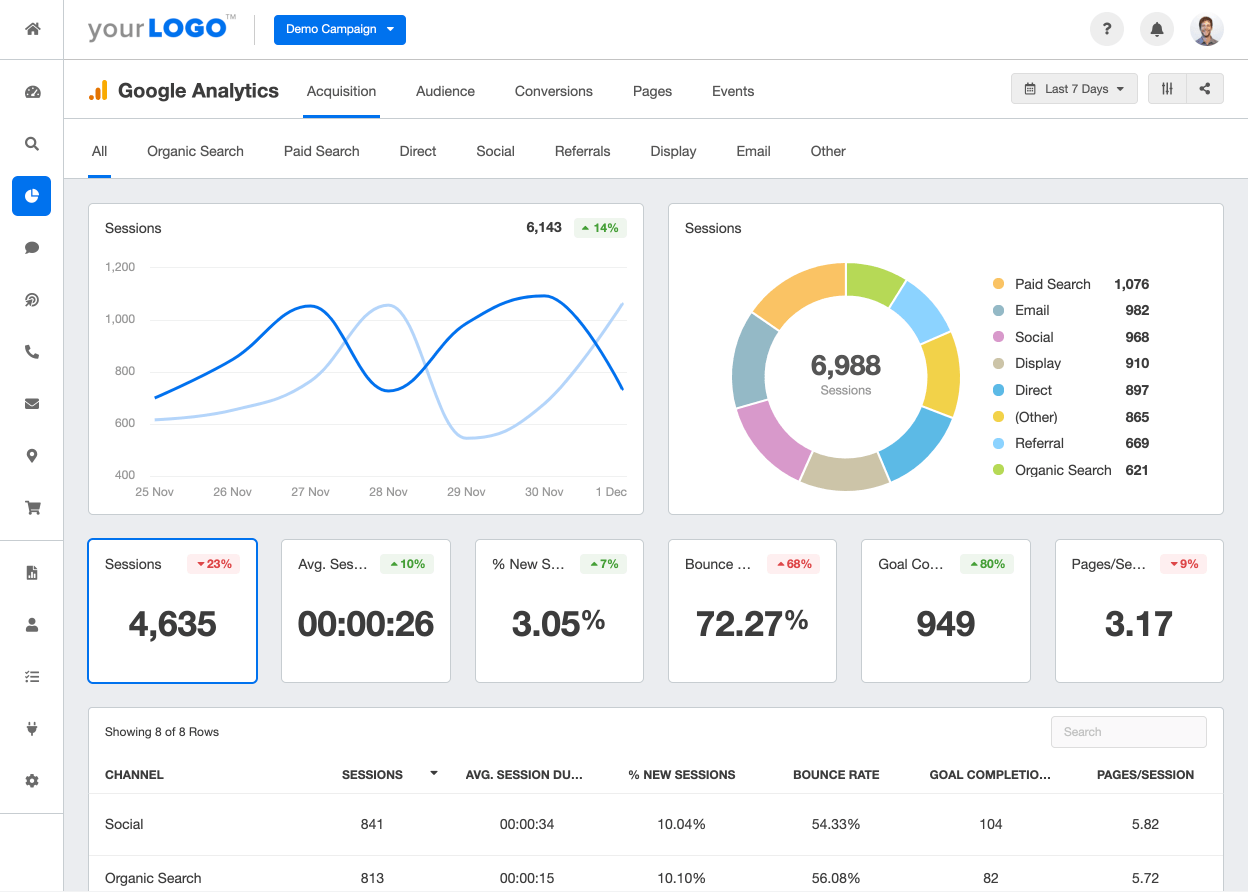
Is there any Google analytics specifics for ADA websites?
Google Analytics has no specific features or tracking mechanisms focusing solely on ADA compliance or accessibility metrics. However, you can use some of its existing capabilities to gauge the accessibility of your website indirectly. Here's how:
1. Bounce Rate: High bounce rates might indicate users having difficulty accessing or understanding your content. Users who can't easily navigate your site or interact with its content will likely leave quickly.
2. Average Session Duration: If users spend less time on your site than expected, this could indicate they're having trouble engaging with your content or navigating your site.
3. Page Views: Fewer page views could indicate that your users struggle to navigate between pages or finding the necessary information.
4. Events: You can set up and track specific events, like form submissions or button clicks, to see if users interact with these elements as intended.
5. Demographics and Interests: Google Analytics provides data on your website's audience, including age, gender, and interests. This data can help you understand who is visiting your site and tailor your accessibility efforts accordingly.
6. User Flow: This feature shows users' path through your site. It can help identify any pages or steps that users are struggling with.
Remember, while Google Analytics can provide you with useful insights, it cannot definitively measure ADA compliance or accessibility. For that, you would need to conduct an accessibility audit, possibly with the aid of accessibility testing tools and services. This could include automated checks and user testing with individuals with various abilities and assistive technology setups.
Please note, Google may have introduced new features or updates related to accessibility after my training data in September 2021. Checking for any updates or changes in Google's tools and policies would be beneficial.
If you have any doubts feel free to reach out to our team at Codedesign
FAQS - Frequently Asked Questions
What is ADA compliance and why is it important for websites?
ADA compliance refers to the Americans with Disabilities Act standards, which ensure that websites are accessible to individuals with disabilities. This compliance is crucial for websites as it ensures equal access to digital content for people with a wide range of disabilities, such as visual, auditory, physical, speech, cognitive, and neurological disabilities. Making a website ADA compliant not only expands your audience by making your site more inclusive but also demonstrates social responsibility and can protect your business from legal challenges. Importantly, ADA compliance aligns with good web design principles, improving the overall user experience for all visitors.
How can understanding ADA standards benefit my website's user experience?
Understanding ADA standards can significantly benefit your website's user experience by ensuring that the site is navigable, understandable, and usable for all users, regardless of their physical or cognitive abilities. By following ADA guidelines, you can create a more inclusive environment that accommodates a wider audience. This includes providing alternatives for non-text content, ensuring that navigation is possible through keyboard inputs for those who cannot use a mouse, and making sure that your website works well with screen readers and other assistive technologies. As a result, your website will likely be more user-friendly, potentially reduce bounce rates, and increase the time spent on your site, benefiting all visitors.
What tools can assist in designing a website for accessibility?
There are several tools available that can assist in designing a website for accessibility, including:
- Web Accessibility Evaluation Tools (WAVE): Provides visual feedback on the accessibility of your web content by highlighting potential issues.
- AXE Accessibility Checker: A browser extension that allows you to test your website for accessibility issues in real time.
- Color Contrast Analyzers: Tools like the Colour Contrast Analyser (CCA) help ensure that your website's color palette is accessible to users with color vision deficiencies.
- Screen Reader Software: Testing your website with screen readers like JAWS, NVDA, or VoiceOver can help you understand how accessible your content is for visually impaired users.
- Keyboard Accessibility Testing: Manually navigating your website using only a keyboard can identify navigation issues for users who cannot use a mouse.
These tools can provide insights and identify areas of your website that need improvement to meet accessibility standards.
Why is developing an accessibility statement important for my website?
Developing an accessibility statement is important for your website because it communicates your commitment to making your site accessible to all users, including those with disabilities. It provides transparency about the accessibility features you have implemented and any known limitations of your website. An accessibility statement can also offer guidance to users who need assistance navigating your site and may include contact information for users to report accessibility issues. This not only builds trust with your audience but also demonstrates due diligence in striving to comply with legal requirements for accessibility.
How can I test my website for ADA compliance effectively?
To test your website for ADA compliance effectively, you should:
- Use automated web accessibility evaluation tools like WAVE, AXE, or Google Lighthouse to scan for common accessibility issues.
- Conduct manual testing to catch issues that automated tools might miss, such as keyboard navigation, logical tab order, and screen reader compatibility.
- Engage users with disabilities in usability testing to gain firsthand insights into their experiences and challenges when navigating your website.
- Review the Web Content Accessibility Guidelines (WCAG) to ensure your website meets the specified success criteria at the desired level of compliance (A, AA, or AAA).
- Consider consulting with accessibility experts who can provide a comprehensive evaluation and actionable recommendations for your website.
Combining these methods will give you a thorough understanding of your website's accessibility and help identify areas for improvement.
What are some common alternatives to text content that enhance accessibility?
Common alternatives to text content that enhance accessibility include:
- Alt Text for Images: Descriptive text for images, which is read by screen readers, allowing visually impaired users to understand the content.
- Captions and Transcripts for Audio and Video: Provide text alternatives for multimedia content, ensuring that users who are deaf or hard of hearing can access the information.
- Text Descriptions for Complex Graphics: Detailed descriptions for complex charts, graphs, or infographics for users who cannot visually interpret the information.
- Sign Language Interpretation: Offering sign language videos for important auditory content can be beneficial for users who are deaf.
- Audio Descriptions: Providing a verbal description of visual elements in videos for users who are blind or have low vision.
Implementing these alternatives ensures that your website's content is accessible to users with diverse needs, enhancing the overall user experience.
Why is regular website updating crucial for maintaining ADA compliance?
Regular website updating is crucial for maintaining ADA compliance because web standards, technologies, and guidelines evolve over time. As new accessibility features and improvements become available, updating your website ensures that it remains accessible to users with disabilities. Regular updates also allow you to address any newly identified accessibility issues, ensuring that your website continues to meet current ADA standards. Additionally, content updates, design changes, or functionality enhancements can introduce new accessibility challenges that need to be addressed proactively. Keeping your website up to date is essential for providing an inclusive user experience and complying with legal accessibility requirements.
How can AI technology assist in making a website ADA compliant?
AI technology can assist in making a website ADA compliant by automating several aspects of accessibility testing and improvement. For instance, AI-powered tools can efficiently scan a website to identify accessibility issues, such as missing alt text, poor color contrast, and lack of keyboard navigability. Some AI solutions can also suggest fixes for identified issues or even automatically apply certain accessibility enhancements, such as generating descriptive alt texts for images. Additionally, AI can support real-time content adjustments to suit the needs of users with disabilities, such as personalizing font sizes and color schemes for better readability. While AI can significantly aid in enhancing website accessibility, it's important to complement these technologies with manual testing and adjustments for a truly inclusive user experience.
What impact does ADA compliance have on SEO performance?
ADA compliance can have a positive impact on SEO performance because many accessibility practices overlap with good SEO principles. For example, providing alt text for images not only makes content accessible to visually impaired users but also allows search engines to better understand and index the image content. Similarly, ensuring that your website has a logical structure and uses proper header tags benefits screen reader users and improves your site's SEO by making it easier for search engines to crawl and understand the content hierarchy. Accessible websites tend to have faster load times, lower bounce rates, and higher engagement, all of which are positive signals to search engines and can improve search rankings. Therefore, investing in ADA compliance can inadvertently enhance your website's SEO performance.
Are there specific Google Analytics metrics that can help track ADA website performance?
While Google Analytics doesn't provide metrics specifically designed to track ADA compliance, several indicators can help assess how accessible your website is and how effectively it serves users with disabilities. Metrics such as bounce rate, average session duration, and pages per session can give insights into the overall user experience and engagement levels, which might indirectly reflect accessibility issues. Additionally, tracking the usage of accessibility features on your website, if implemented, such as font size adjustments or contrast settings, can provide direct feedback on the utilization of these features. Analyzing user flows and navigation paths can also highlight potential accessibility barriers if certain pages have unusually high exit rates. Although these metrics are not exclusively for tracking ADA compliance, they can offer valuable insights into how accessible and user-friendly your website is.

About Bruno GavinoBruno Gavino is the CEO and partner of Codedesign, a digital marketing agency with a strong international presence. Based in Lisbon, Portugal, with offices in Boston, Singapore, and Manchester (UK) Codedesign has been recognized as one of the top interactive agencies and eCommerce agencies. Awarded Top B2B Company in Europe and Top B2C company in retail, Codedesign aims to foster personal relationships with clients and create a positive work environment for its team. He emphasizes the need for digital agencies to focus on data optimization and performance to meet the increasingly results-driven demands of clients. His experience in digital marketing, combined with a unique background that includes engineering and data, contributes to his effective and multifaceted leadership style. |

About CodedesignCodedesign is a digital marketing agency with a strong multicultural and international presence, offering expert services in digital marketing. Our digital agency in Lisbon, Boston, and Manchester enables us to provide market-ready strategies that suit a wide range of clients across the globe (both B2B and B2C). We specialize in creating impactful online experiences, focusing on making your digital presence strong and efficient. Our approach is straightforward and effective, ensuring that every client receives a personalized service that truly meets their needs. Our digital agency is committed to using the latest data and technology to help your business stand out. Whether you're looking to increase your online visibility, connect better with your audience, get more leads, or grow your online sales. For more information, read our Digital Strategy Blog or to start your journey with us, please feel free to contact us. |
CodeDesign is leading:
- Digital Agency
- Digital Marketing Agency
- Digital Ecommerce Agency
- Amazon Marketing Agency




Add comment ×